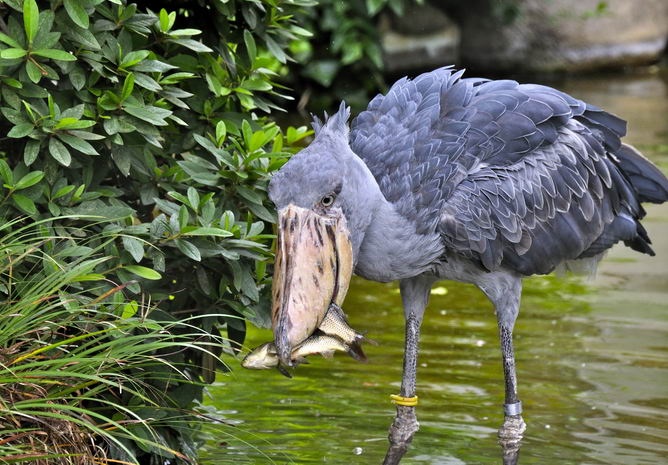
The shoebill. This miracle of nature of Ciconiiformes is also called the Royal Heron. The bird is quite large – in height it grows up to 1.2 m, and a wingspan is up to 2.3 m. The Large beak has unusual shape.
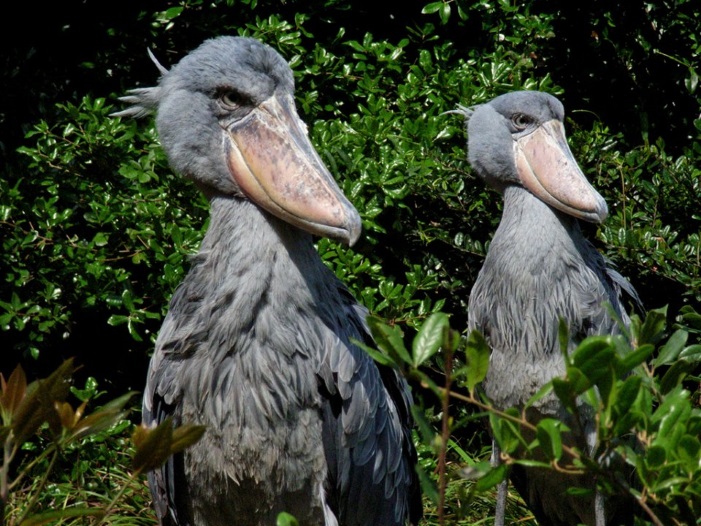
Another feature shoebill is its eyes, to be exact – their location. These birds’ eyes are not located on both sides of the skull, but in its front part.
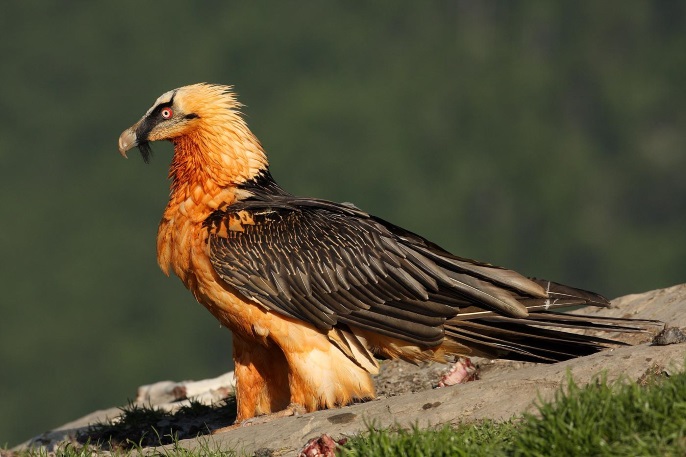
The bearded vulture. It also known as the lammergeier or ossifrage. Individuals of bearded bearded vulture are rather large, the body size is about 95-125 cm, wingspan is about 308 cm, and the weight ranges from 7.5 kg.

Most bearded vultures live in Southwest and Central Asia, but also they can be found in Southern Europe, in Eastern and Southern Africa.
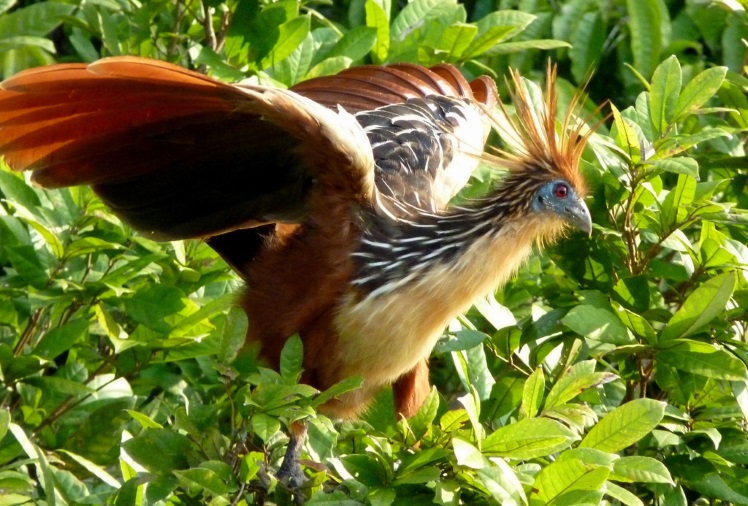
The hoatzin, also known as the Canje pheasant. They live in Equatorial South America from Colombia to Bolivia. Despite the fact that their size is not very big (about 60 cm), these birds almost do not fly. Most of the time they spend in the trees.
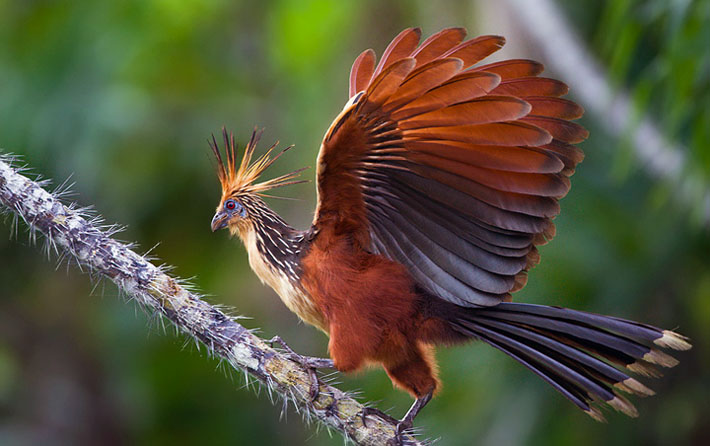
Hoatzin’s special feature is their digestive system, due to which these birds emit very unpleasant odor. For this reason, the local population began to call stinkbird.
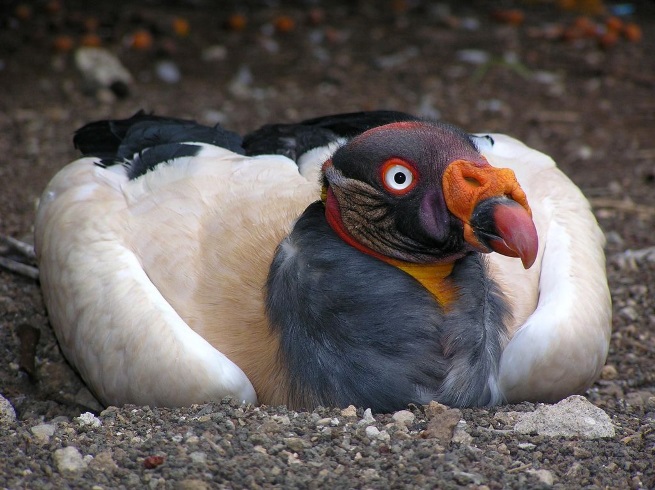
The King vulture. Its habitat is South America. Actually, this is the most striking specie of the entire family of the American vultures. Why is it “king”? Most likely this name was given due to the fact that it always wins in matches with other vultures for carrion.
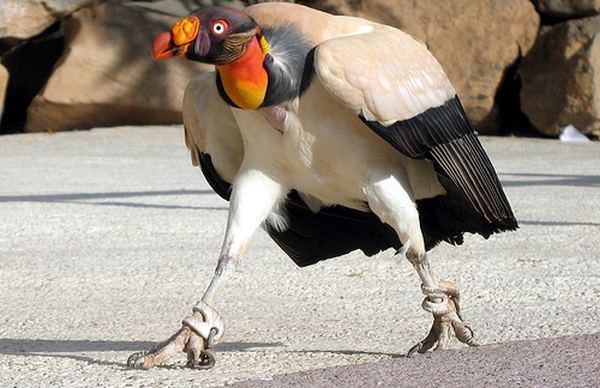
The king vultures are large birds. Their body size is about 90 cm and a weight is in the range of 4.5 – 5 kg.
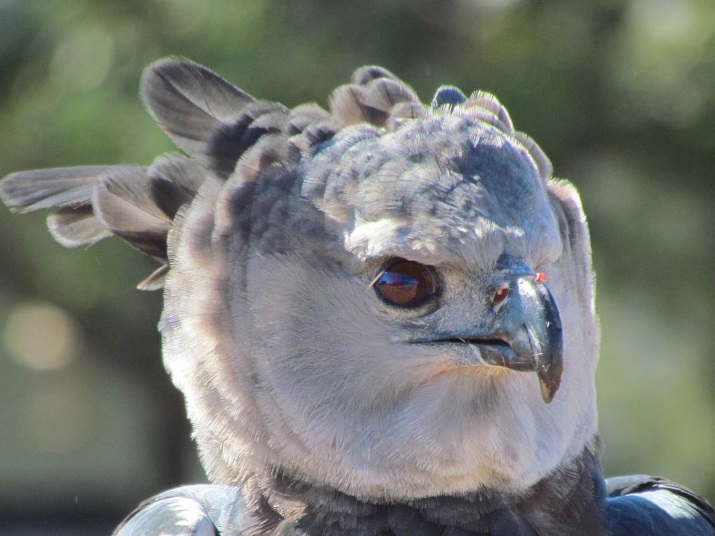
The harpy eagle. It is sometimes known as the American harpy eagle. These large predators from the family of the hawk can be found in the tropical forests of Central and South America – from Mexico to Brazil. They are quite large: body size is about 110 cm and weight is about 9 kg.о 9 кг вес.
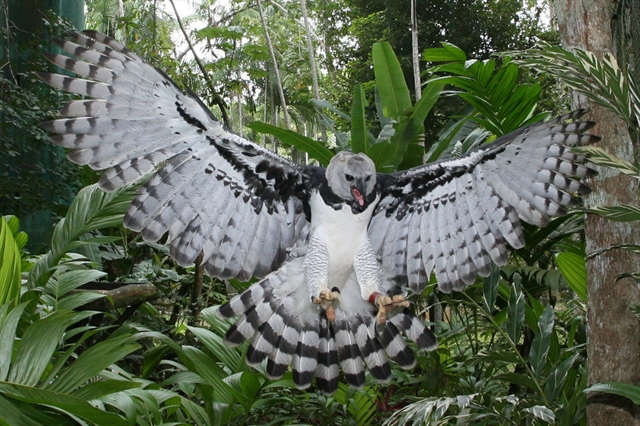
With its impressive size and incredibly large paws, harpy eagle can easily go up into the sky with small pigs or lambs. That is why the local villagers do not like, and are even afraid of these birds.
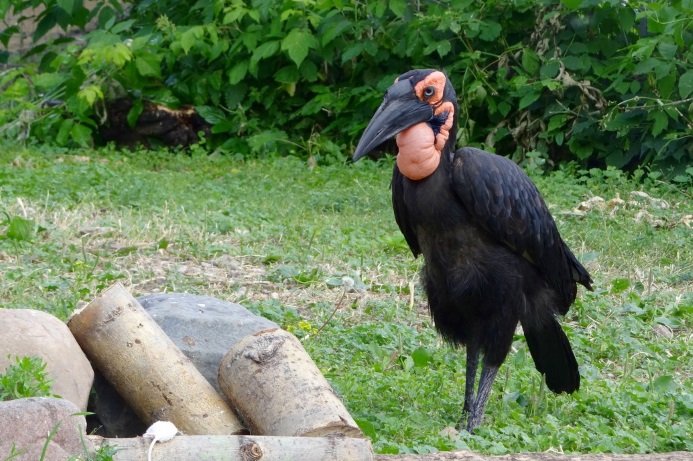
The southern Ground Hornbill. This bird is the largest of all hornbills in the world. The body length can reach 129 cm, weight – up to 6.2 kg. The main habitat of Southern Ground Hornbill is African shroud near the equator.
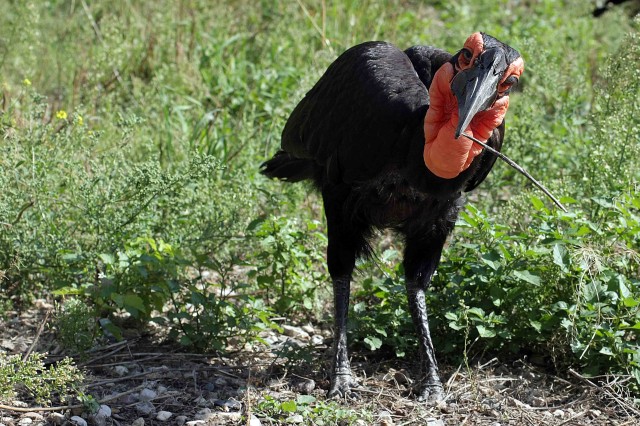
Southern Ground Hornbill is not only the largest of its kind, they are also they are the only real predators. Their food is arthropods and insects.
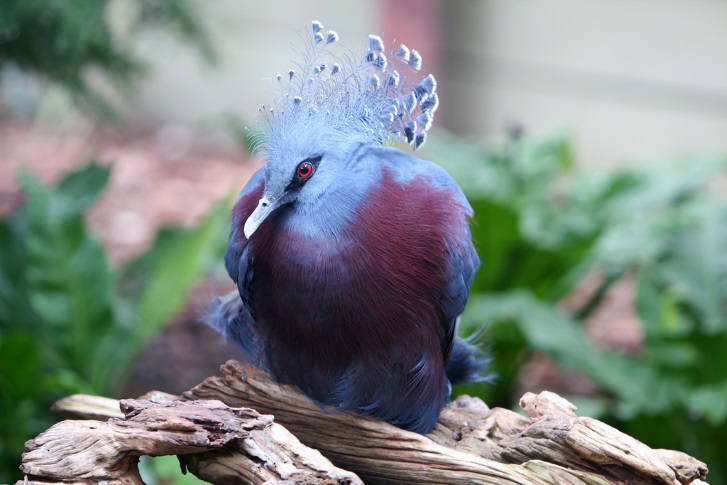
The Victoria crowned pigeon. These extraordinarily beautiful birds are found only in New Guinea. They are quite large for its kind – a body length is about 74 cm and weigh is up to 2.5 kg. Interestingly, crowned pigeons almost do not fly, but they can do it
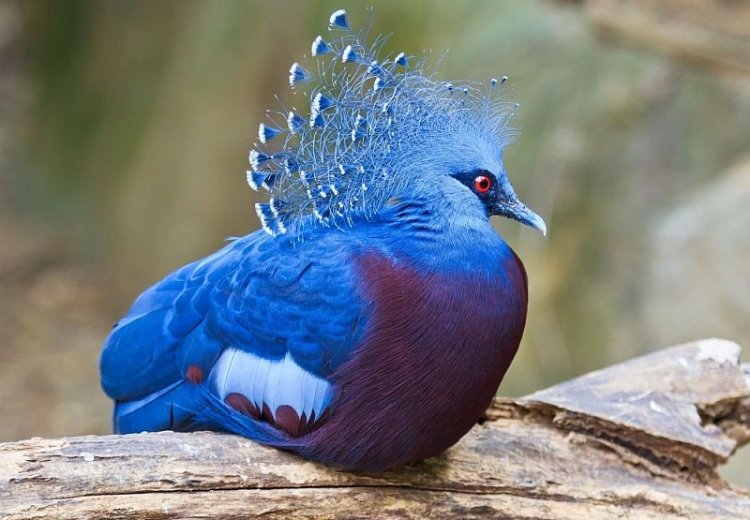
The number of these pigeons is rapidly declining. The main reason for the extinction of Victoria crowned pigeon is uncontrolled bird hunting for beautiful feathers. Another reason is the destruction of the natural conditions of their habitats.
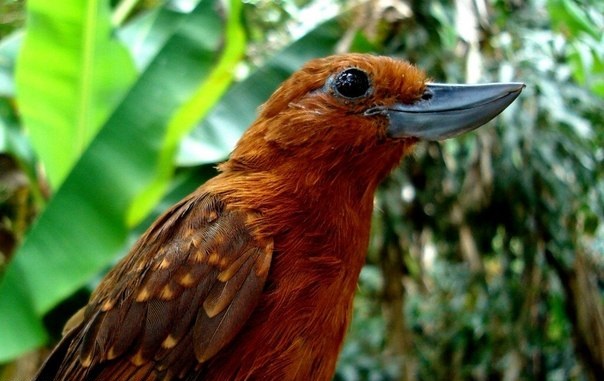
The Clytoctantes. If you look closely, you can see that a thick mysterious bird’s beak is incredibly similar to a real smile. That’s why the antbird Clytoctantes is called “Mona Lisa the bird kingdom”.
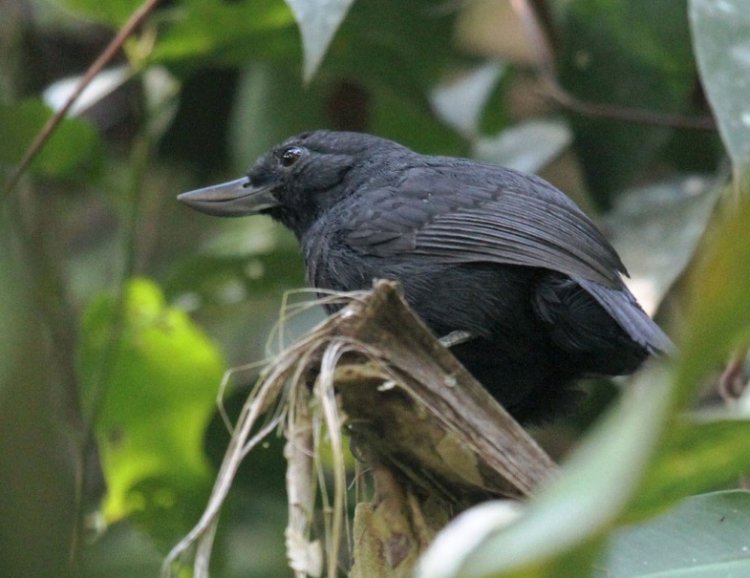
The species were feared to be extinct or nearly so, until both were rediscovered in 2004 in Columbia.
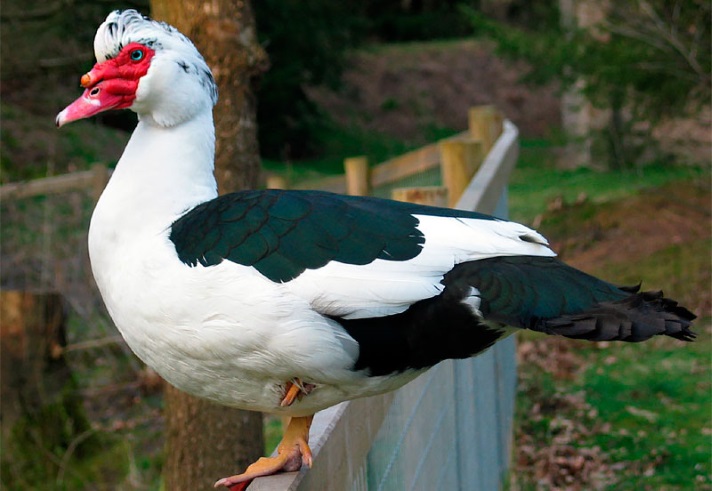
The Muscovy duck. This bird has become domestic since the ancient times; it was domesticated by the Aztecs. The Muscovy duck got its name due to the fact that older individuals emit the fat, which has the smell of musk.
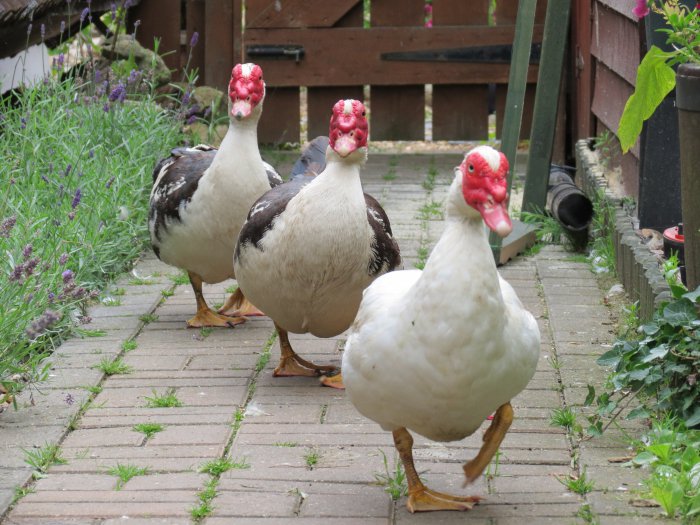
Currently, the Muscovy duck can be seen on every continent. From the historical homeland it was brought to Africa, and later in Europe, Asia, Australia…
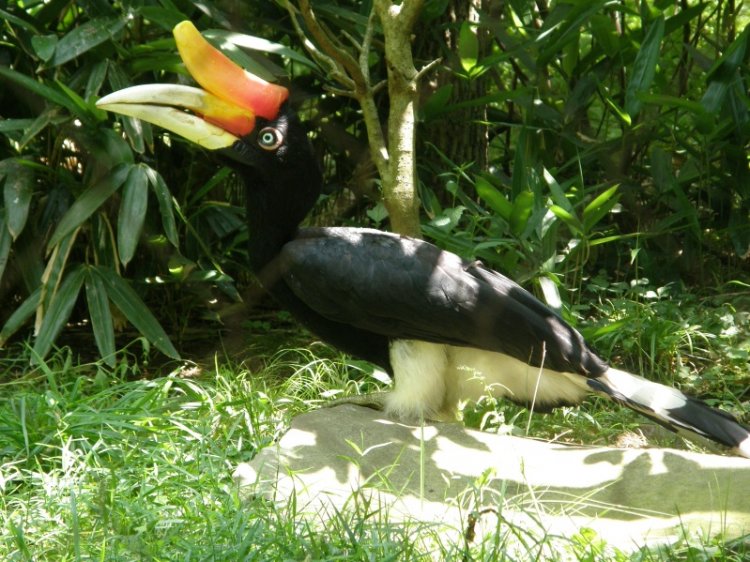
The rhinoceros hornbill. The rhinoceros hornbill is the largest hornbill. Some individuals grow to 122 cm long and weigh at least 3 kg. These birds live in the tropical forests of the Malay Peninsula, Sumatra, Borneo and Java.
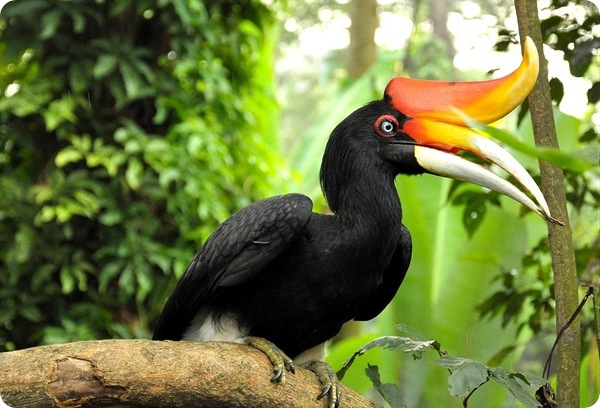
The rhinoceros hornbills have one more feature – it’s their lifetime. It is known that in captivity they live on average 35 years old, although there were a few cases where such birds lived until 90 years.